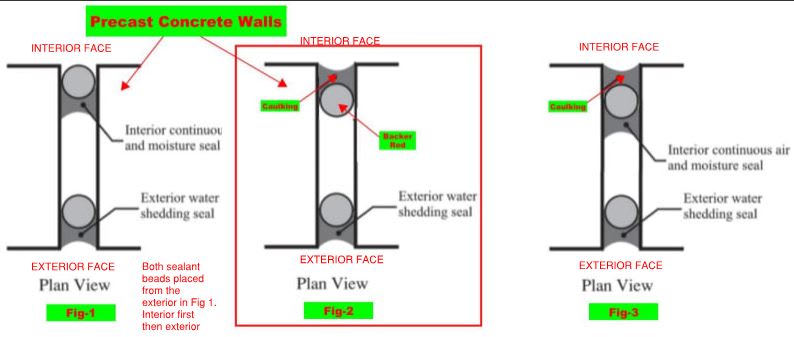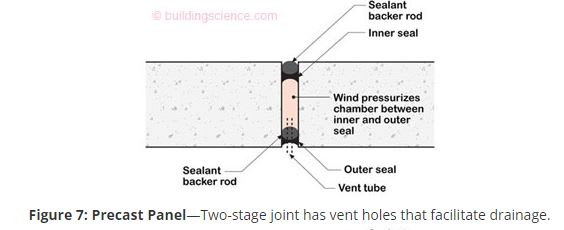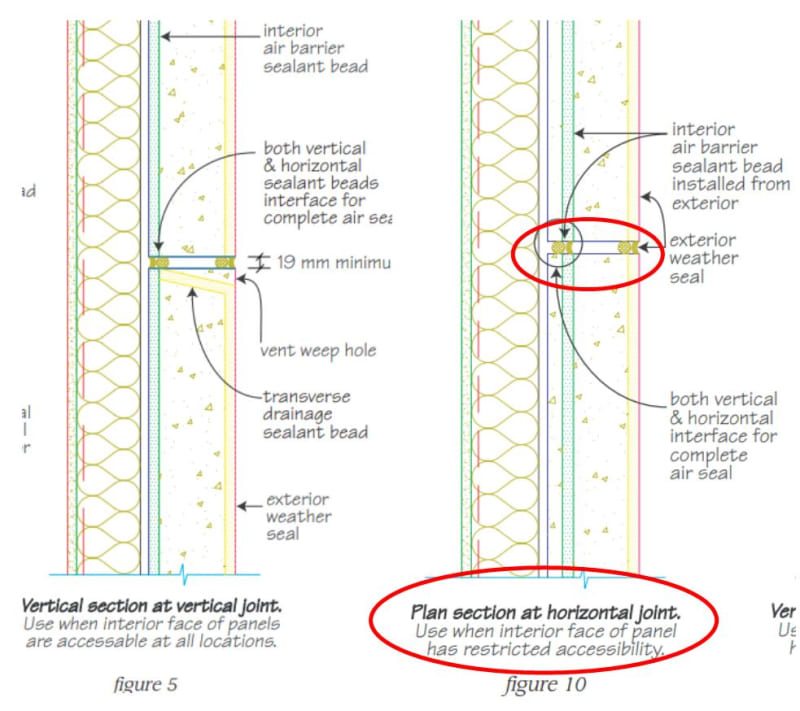I have done very detailed variations of these types of details frequently. This is specialist weathertightness design, if you are not assuring for weathertightness, you are best to let the architect/envelope consultant take the reigns.
Fig1, is impossible to achieve. even skilled caulking applicators would make a mess of this. its too far to reach your nozzle, tool, the backer rod can too easily be pushed out the far side.
Fig3 is someones "good idea", going overkill, which is actually a bad idea. how does moisture drain from between the two seals on either side of the single backer rod if it finds a way in? yes, moisture should be assumed to always find a way in. also, same issues of installation as Fig1
Fig 2 is totally appropriate. the only reason people deviate from Fig 2, is they wonder, how will the seals be applied on the interior side when they cannot be accessed at brackets, slabs, etc? the secret is to use a short run of expanding foam tape like Emseal or sika600 to form the barrier, slide it in by hand, and butt your caulking joint into that. its only acting as an air seal, and does not need to be perfectly weathertight, as the airspace between the two seals needs be formed as a drained and ventilated cavity.
similar to this last detail posted by JohnRwals. every cavity need drain, dry, and be broken up regularly. every level is best, so if there is a leak, it doesnt originate 8 floors up and manifest 30 metres to the west and leave some poor sod scratching his head about how its getting in







